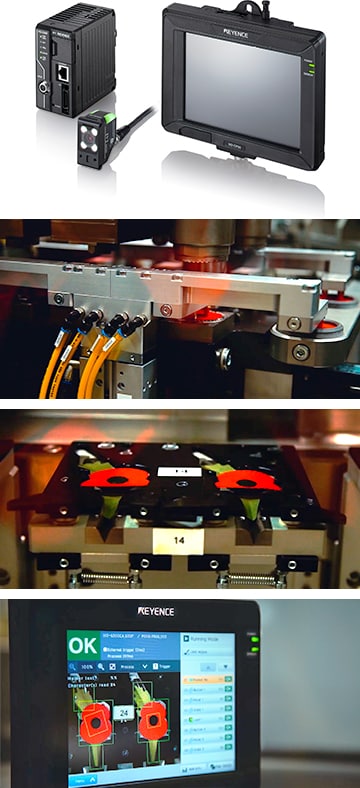- Home
- Solutions
- Case Studies
- SEWTEC Automation Uses KEYENCE IV2 Vision Sensors to Manufacture Plastic-Free Poppy
SEWTEC Automation Uses KEYENCE IV2 Vision Sensors to Manufacture Plastic-Free Poppy
SEWTEC Automation Limited is the predominant Machine Builder in the UK for custom-made industrial automation solutions. The company excels at inventing and innovating, creating original and bespoke machines for any industry based on the customer’s needs and challenges. SEWTEC has a global presence and a proven track record of delivering effective and reliable automation systems.

SEWTEC Automation was recently commissioned to design and build new state-of-the-art machines to manufacture the Royal British Legion’s new plastic free poppy. The new poppy is made entirely from paper and can be recycled in ordinary paper recycling collections. It maintains the iconic poppy design and leaf shape and can be fastened with a pin, inserted into a buttonhole, or stick-on versions are also available.
This poppy has been in production throughout 2023 and is the only one being manufactured by the RBL and Poppy Scotland. This new paper poppy is now readily available to buy and looks fantastic.
To achieve this ambitious goal, SEWTEC needed a reliable and cost-effective solution for quality inspection of the paper poppies. The company chose to use KEYENCE IV2 Vision Sensors, which are designed to handle a huge variety of vision inspection tasks with ease and accuracy.
The IV2 is a cost-effective and easy-to-use solution for complex vision inspections. The built-in AI can automatically adjust to changes in lighting, background, or product variation, ensuring consistent and accurate inspection results. This makes it a simple and flexible sensor as Andy Perks, Head of Sales at SEWTEC, explains:
"We use KEYENCE Vision Sensors because of their ease of use and knowing that they would work 'out of the box.' The customer support, both here and with the end customer, was also crucial for this application."
SEWTEC Automation used the IV2 on their three machines that produced the paper poppies at a rate of 167 poppies per minute.
The sensors were used for a variety of inspection tasks. Firstly, they checked the definition of the creases on the petals, which gave the poppies a realistic and natural look. The sensors detected any defects or deviations from the desired crease pattern and rejected the faulty poppies.
Next they verified the presence and position of the leaves, petals and centre to ensure that all the parts of the poppy were present and correctly assembled, before finally checking the branding as well.
The large 5.7 inch display means that at a glance anyone can immediately see a live view of the camera output and all the inspections being performed. For OEMs like SEWTEC, its important that their customers don't need excessive training to be able to operate the equipment. Being able to track exactly how many poppies are being rejected is also vital for a project that is, at its heart, about sustainability.
By using KEYENCE IV2 Vision Sensors, SEWTEC was able to ensure the high quality and consistency of the paper poppies, as well as the efficiency and productivity of the machines. The sensors helped RBL and Poppy Scotland reduce waste and save costs, as they minimized the number of defective poppies and the need for rework.
This automation solution serves as a perfect example of the kind of highly-specialised solution that SEWTEC can create as well as the key benefits of KEYENCE’s sophisticated inspection lineup.
APPLICABLE PRODUCT CATALOGUE
Related Products
-
- Vision Sensor with Built-in AI
IV3 series -
Differing from conventional models, the IV3 Series Vision Sensor with Built-in AI automatically determines imaging conditions and detection conditions with its AI specifically designed for presence and difference checking. Installation and operation are simple: just determine the part to focus on and register a minimum of one OK and one NG image. No specialised knowledge or extensive time and effort for setup are required. The all-in-one design includes a lens and illumination, eliminating the need to select these devices and allowing for immediate finalization of detection results with no adverse effects from ambient light. Setting operations are performed using a small amplifier with a built-in high-performance CPU, eliminating the need for a separate high-performance PC. The ultra-compact head supports an extensive range of installation distances from 50 to 3000 mm, and the maximum field of view of 2730 × 2044 mm allows for detections from extremely wide angles, enabling a wide variety of applications.
- Vision Sensor with Built-in AI


